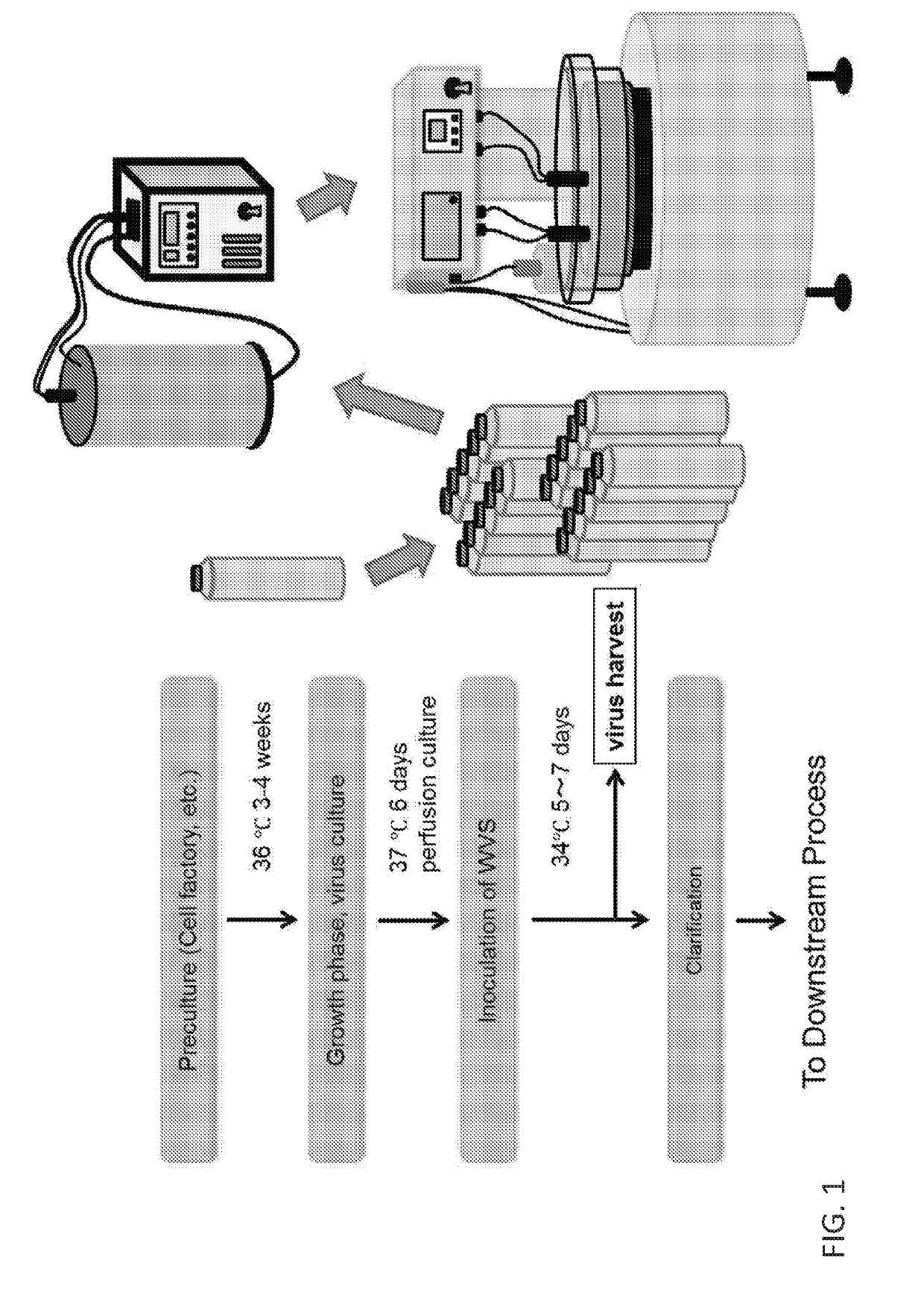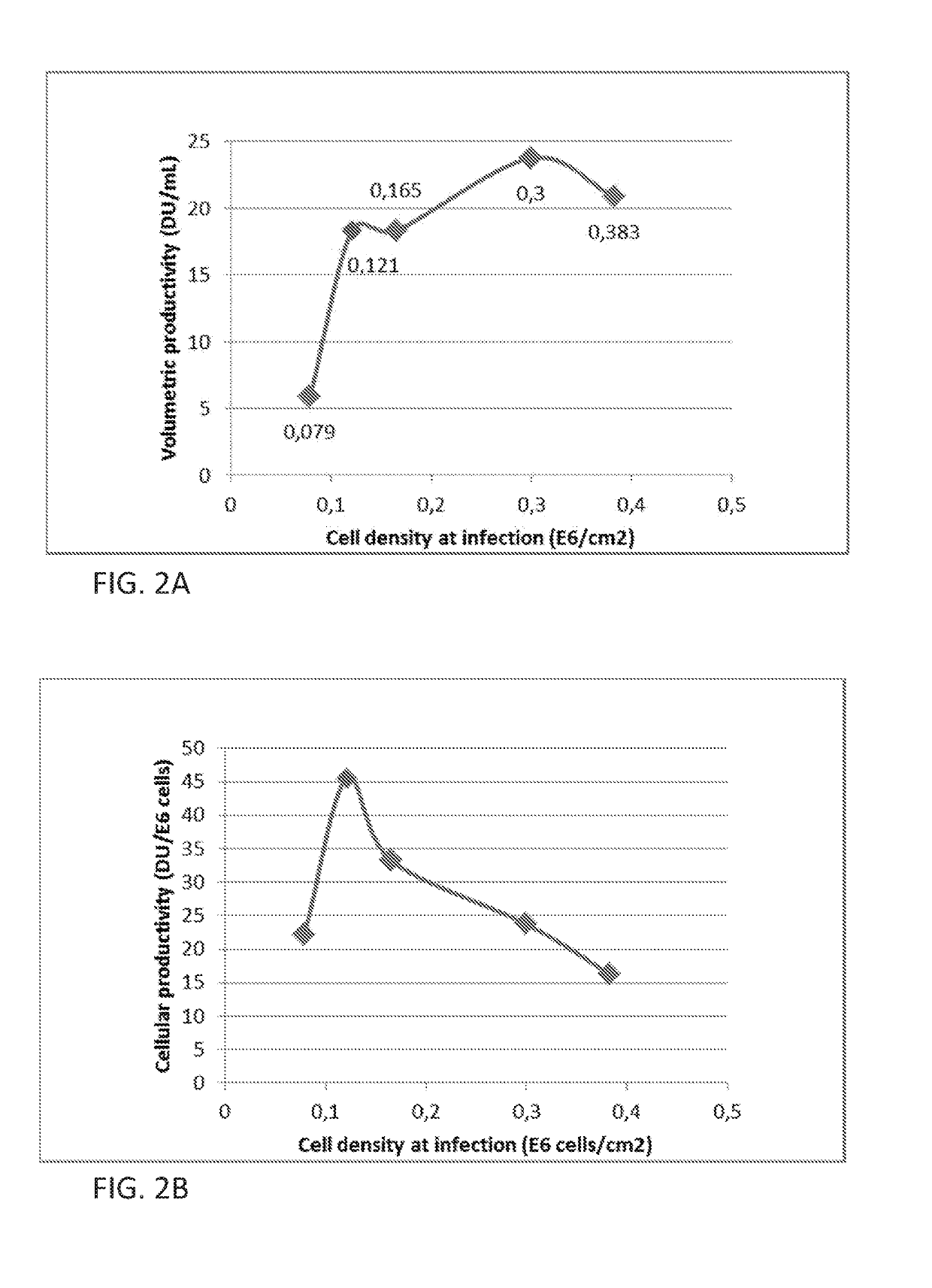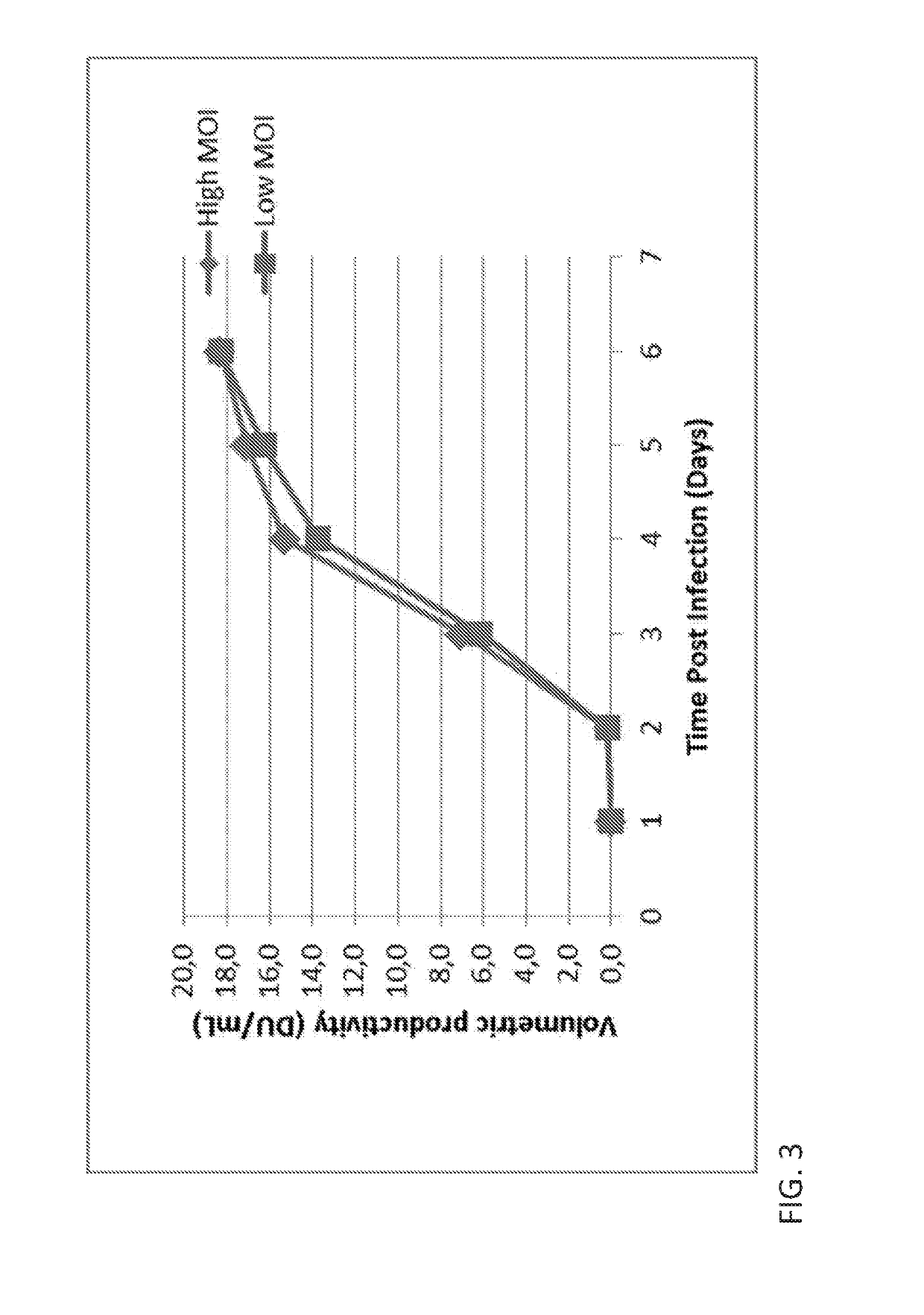Methods for producing virus for vaccine production
a virus and vaccine technology, applied in the field of virus production methods, can solve the problems of outbreaks, high cost, and severe flaccid paralysis of vaccine production, and achieve the effects of enhancing viral production, cost-effectiveness, and cost-effectiveness
- Summary
- Abstract
- Description
- Claims
- Application Information
AI Technical Summary
Benefits of technology
Problems solved by technology
Method used
Image
Examples
embodiment 1
2. The method of embodiment 1, wherein the yield of Enterovirus C virus harvested in step (c) is increased, as compared to a yield of Enterovirus C virus harvested in the absence of the surfactant.
3. The method of embodiment 1 or embodiment 2, wherein the surfactant is a polysorbate.
4. The method of embodiment 1 or embodiment 2, wherein the surfactant is a polyethylene glycol-based surfactant.
5. The method of any one of embodiments 1-4, wherein the Enterovirus C virus is a poliovirus serotype selected from the group consisting of S1, S2, and S3.
6. The method of any one of embodiments 1-5, wherein the cell is cultured in step (a) in a liquid culture.
7. The method of any one of embodiments 1-5, wherein the cell is an adherent cell, and the cell is cultured in step (a) on a microcarrier.
8. The method of any one of embodiments 1-5, wherein the cell is an adherent cell, and the cell is cultured in step (a) in a fixed bed comprising a matrix.
9. The method of any one of embodiments 1-5, wh...
embodiment 8
10. The method of embodiment 8, wherein the cell is inoculated with the Enterovirus C virus at an MOI of between about 0.01 and about 0.0009.
11. The method of embodiment 8 or embodiment 10, wherein between about 120,000 cells / cm2 and about 300,000 cells / cm2 are inoculated.
12. The method of embodiment 8 or embodiment 10, wherein between about 4,000 cells / cm2 and about 16,000 cells / cm2 are inoculated.
13. The method of embodiment 12, wherein about 5.000×) cells / cm2 are inoculated.
14. The method of any one of embodiments 8, or 10-13, wherein the cell is cultured during steps (a) and / or (b) at a volume / surface ratio of about 0.1 mL / cm2 to about 0.3 mL / cm2.
15. The method of any one of embodiments 8 and 10-14, wherein step (b) further comprises culturing the inoculated cell under conditions in which the Enterovirus C virus infects the cell and the infected cell produces the Enterovirus C virus.
16. The method of any one of embodiments 8 and 10-15, wherein the cell is inoculated at a pH that...
embodiment 19
20. The method of embodiment 19, wherein the Enterovirus C virus is a poliovirus serotype selected from the group consisting of S1, S2, and S3.
21. The method of embodiment 19 or embodiment 20, wherein polysorbate is added to the second cell culture medium during inoculation of the cell with the Enterovirus C virus or from approximately one hour to approximately four hours prior to step (c).
22. The method of any one of embodiments 19-21, wherein between about 120,000 cells / cm2 and about 300,000 cells / cm2 are inoculated.
23. The method of any one of embodiments 19-21, wherein between about 4,000 cells / cm2 and about 12,000 cells / cm2 are inoculated.
24. The method of embodiment 23, wherein about 5,000 cells / cm2 are inoculated.
25. The method of any one of embodiments 19-24, wherein the cell is cultured during steps (a) and / or (b) at a volume / surface ratio of about 0.1 mL / cm2 to about 0.3 mL / cm2.
26. The method of any one of embodiments 19-25, wherein step (b) further comprises culturing the...
PUM
| Property | Measurement | Unit |
|---|---|---|
| pore size | aaaaa | aaaaa |
| pore size | aaaaa | aaaaa |
| height | aaaaa | aaaaa |
Abstract
Description
Claims
Application Information
 Login to View More
Login to View More - R&D
- Intellectual Property
- Life Sciences
- Materials
- Tech Scout
- Unparalleled Data Quality
- Higher Quality Content
- 60% Fewer Hallucinations
Browse by: Latest US Patents, China's latest patents, Technical Efficacy Thesaurus, Application Domain, Technology Topic, Popular Technical Reports.
© 2025 PatSnap. All rights reserved.Legal|Privacy policy|Modern Slavery Act Transparency Statement|Sitemap|About US| Contact US: help@patsnap.com



